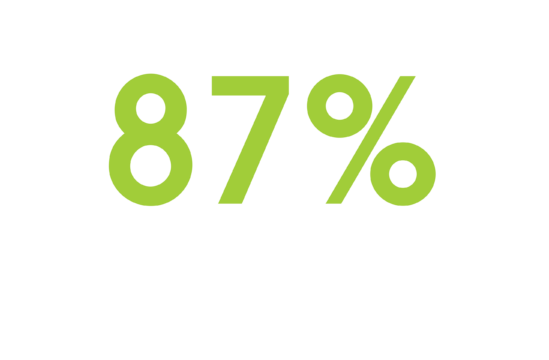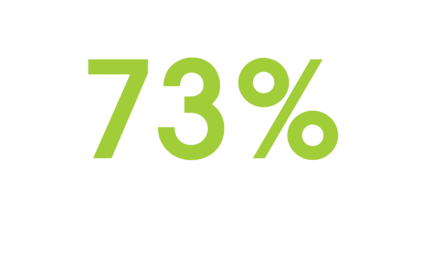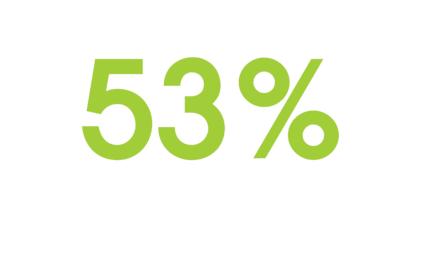© 2025 Alliance for Quality Broadband

Investing to Close the Digital Divide for Good
Though its name is simple, the “digital divide” is a set of complex and often interrelated issues typically categorized into two buckets:
Access
The availability of a reliable high-speed internet network.
Adoption
The set of very different and often complex reasons people with access aren’t online, ranging from affordability of the service or devices needed to connect, lack of digital literacy, a lack of understanding of how being online could be beneficial, housing insecurity, and privacy concerns.
This complex problem requires a comprehensive solution. To close the digital divide for good, we must solve both issues:


Removing Barriers to Access
We cannot close the digital divide until reliable, high-speed internet service is available to 100% of the country.
The most recent data from FCC reports at least 14.5 million Americans are unable to access high-speed internet at home, 78% of those – more than 11 million Americans – live in rural areas. After many years and billions of dollars invested (or in the process of being invested), the locations that remain unserved are some of the most difficult and expensive to reach. And unless government deployment subsidies are fiercely protected to bring access to unserved areas, many more years will pass, many more billions will be spent, and these families and small businesses will still be waiting for their turn.
- When more families live in a smaller area, the costs to reach them are lower and the number of potential customers gained is high.
- In rural areas where few families live spread across a far bigger area, the costs to reach them are significantly higher and the number of potential customers gained is significantly lower.
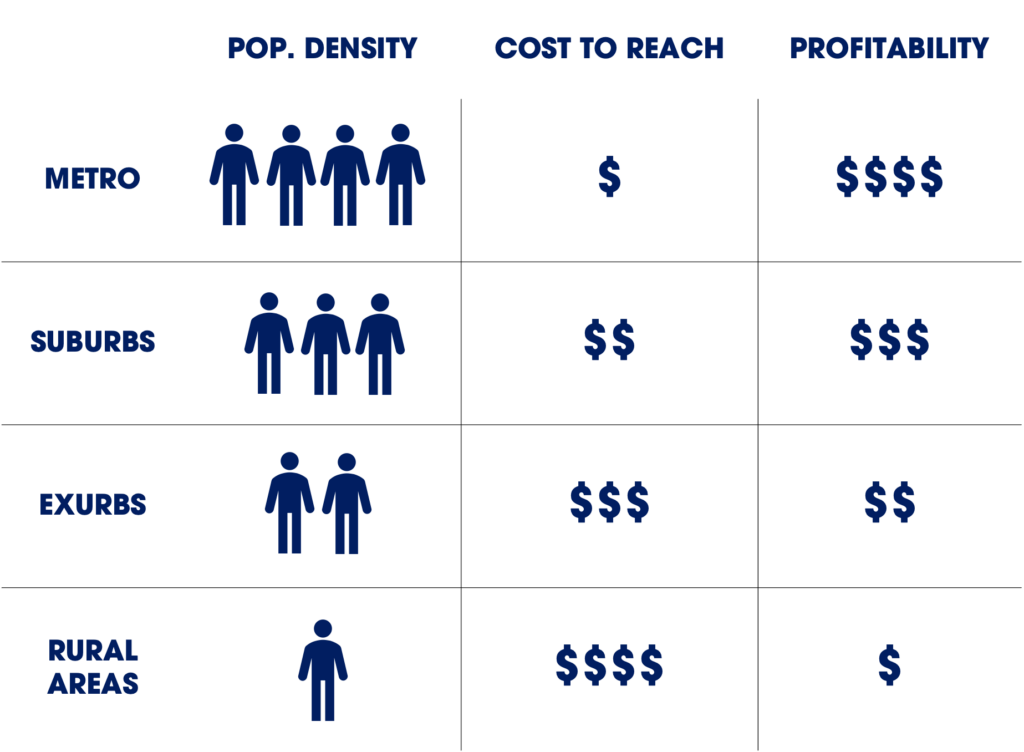
In fact, the costs to reach rural areas alone are often so high that they will not ever be reached without at least some government support subsidies.
Prioritize Unserved Americans
Unfortunately, government broadband subsidies were often misdirected in the past – spent in more profitable, densely populated areas, even when those areas already had high-speed internet service available. With a new infusion of government subsidies to build broadband networks, we can’t make the same mistakes of the past or people who still have no access to high-speed internet whatsoever – those living in the most difficult to reach and expensive to serve locations – will never get connected.
It sounds simple, but to reach 100% access, every unserved family must have high-speed internet service available.
To make that possible, broadband deployment subsidy programs have to prioritize reaching those with absolutely no access first. Today, most broadband deployment subsidy programs define “unserved” as having no access to 25/3 Megabits per second (Mbps), which means subsidies for unserved communities can only be used to reach those with no access at all or those whose access is slower than 25/3 Mbps.
How and why do subsidies continue to miss the rural areas they are meant to connect?
The cause has often been a failure to ensure money is spent building to the hardest-to-reach areas. Those tasked with building internet networks will reliably build to the most profitable, easiest-to-reach locations first. It makes business sense. But if we want to reach those without robust internet, we need to make sure subsidies require building to such areas. Additionally, if unnecessary speed or technology requirements are imposed that allow funding to be used to build in large metro or suburban areas (even though they already have incredibly fast service available), the exurbs and rural areas get pushed to the back of the line… again.
What speeds are necessary?
When the COVID-19 pandemic first forced Americans to work and learn from home, news quickly turned to a growing need for broadband “upstream” or upload speeds, which are required for video conferencing. And in fact, upstream traffic did increase significantly – 40% between December 2019 and December 2020. But the context for that growth is important: the increase in upstream was from 5% of total usage to 7% of total usage, meaning downstream usage still comprised 93% of total usage.
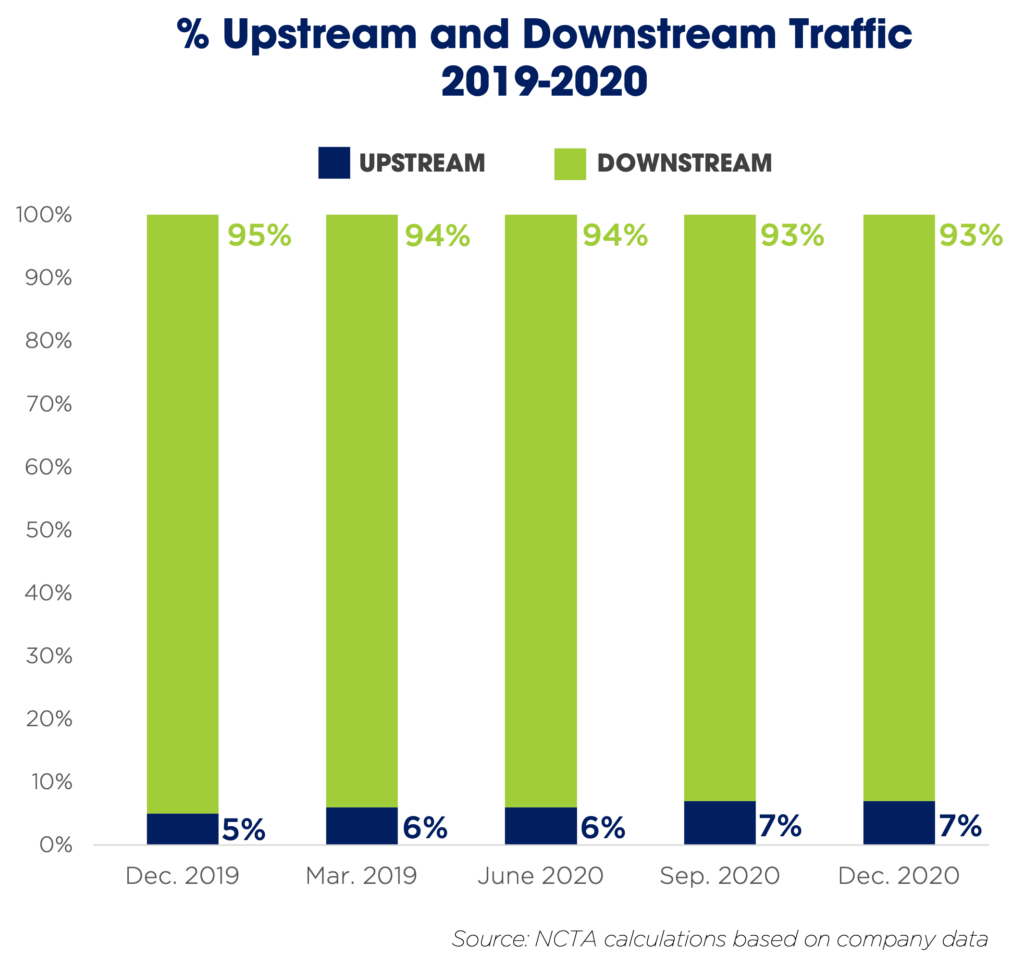
“Even with the growth in the use of upstream intensive applications such as video conferencing, the downstream-to-upstream traffic ratio is still highly asymmetrical and illustrates that asymmetrical broadband fulfills the requirements for most residential broadband users.”
*Source: Broadband Internet Technical Advisory Group (BITAG)
In fact, the average Downstream:Upstream bandwidth ratio has been exceptionally asymmetrical since 2010, and research from CommScope predicts these asymmetric usage patterns will continue in the years ahead, with the U.S’s average Downstream:Upstream bandwidth ratio in the 10:1 to 15:1 range.
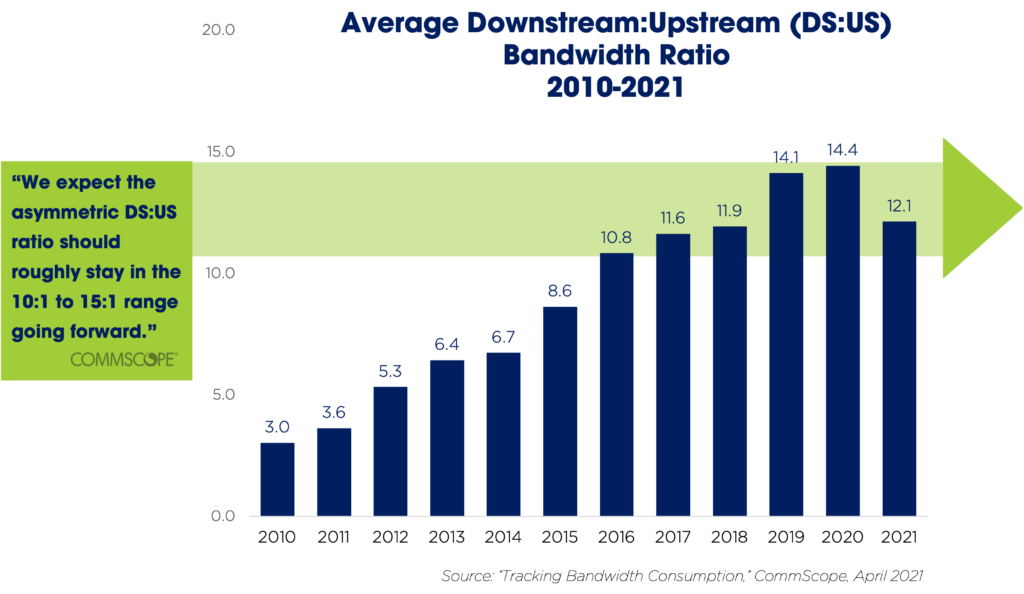
As a result, if policy makers decide to raise the speed of “unserved” from 25/3 Mbps, they should keep the same asymmetric ratio to reflect how people have used and are expected to continue using the internet.
Conversely, if well-meaning policymakers focus on raising speeds rather than connecting the unconnected, unserved communities are likely to suffer – and no progress will be made in closing the broadband availability gap
What is the role of government-owned internet in achieving 100% availability?
Government-owned internet is created when a local government – often a municipality or town – attempts to build and operate its own internet network. To reach 100% availability, government-owned networks will be an important solution for every remote or costly-to-reach unserved areas, where subsidies still do not attract a private sector internet service provider (ISPs) to build. But where ISPs already serve an area – or are willing to do so with government support – using tax dollars to build a government-owned broadband network ignores the many consumer drawbacks and taxpayers risks – including a history of failure across the country – and in spite of the other needs of these communities. When possible, partnering with industry experts is a highly efficient and effective way to leverage the interests of private providers in extending network reach, while ensuring citizens have access to the the ongoing benefits of high-quality scaled commercial broadband networks.

Removing Barriers to Adoption
While some rural Americans continue to struggle with the problem of access to high-speed internet, for many living in urban environments the problem is one of adoption. The adoption gap in the digital divides comes from people who aren’t online because they lack the digital or language skills to get online, are unable to afford home internet or a computer, or fail to see why broadband is necessary. The adoption gap cuts across demographic and geographic lines, but disproportionately impacts less advantaged communities. According to the National Urban League’s Latimer Plan for Digital Equity and Inclusion, the adoption gap is most likely to impact “low-income households, those with lower education levels, older adults, Black Americans, Latinxs, and Native Americans.”
Addressing the adoption gap requires a clear-eyed understanding of the underlying and systemic barriers to adoption that millions of Americans face. Only by addressing these root causes of inequity will we be able to reach our goal of closing the digital divide.
Ensure Solutions Address the Underlying Issues
2021 data from Pew Research Center found 77% of U.S. adults already have broadband service at home, narrowing the universe of unconnected to the remaining 23% of non-broadband users.
Surprisingly, within the 23% of non-broadband users, the vast majority (71%) say they are not interested in having such a connection at home.
When non-broadband users were asked to name the most important reason for refusing to subscribe to a broadband service, only 27% cited the cost of either internet service or computers, another 19% said their “smartphone does everything they need,” and 9% said service was “insufficient or not available.”
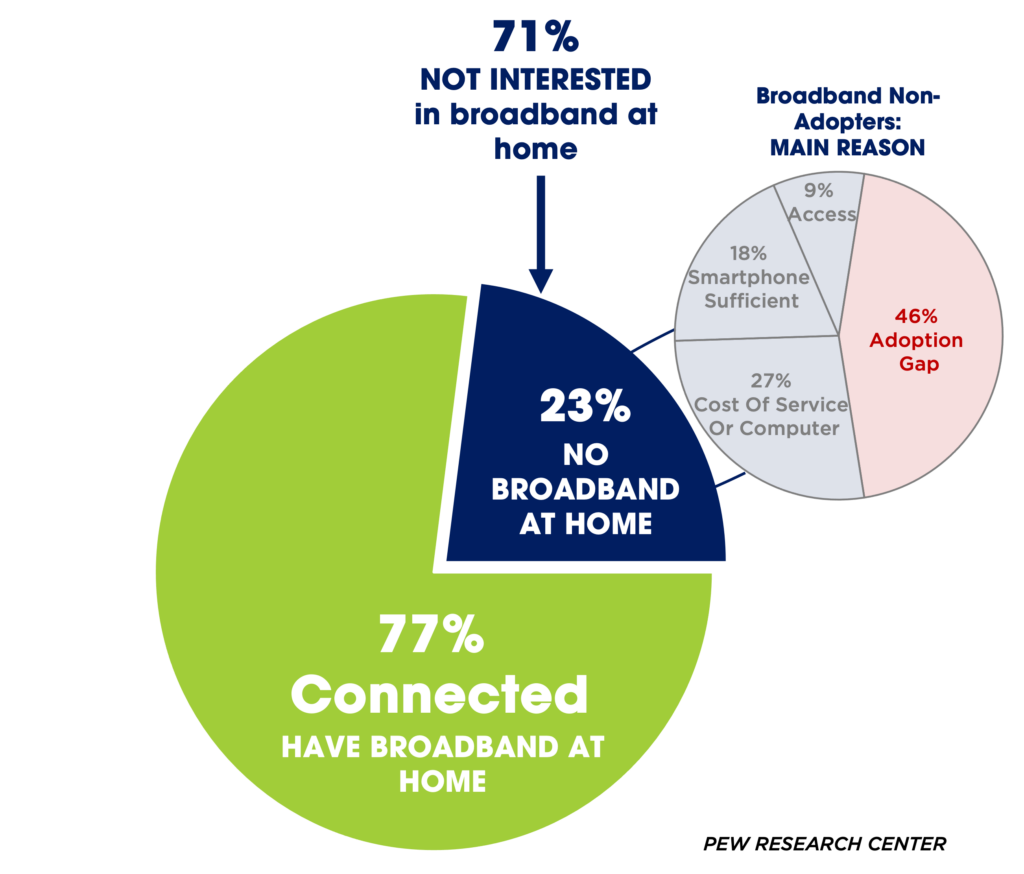
Because of the successful Affordable Connectivity Program, the FCC is taking action to remove affordability barriers. So, while a limited number of Americans (mostly in rural areas) do still lack the high-speed internet availability at home, 46% of non-broadband users name a reason other than access or affordability, a set of issues referred to in policy circles as the “adoption gap.”
The importance of solving for the adoption gap (and complexities of doing so) have been seen across the country. Even in instances when access and affordability barriers are removed from the equation, a significant percentage of American families still don’t get connected.
For example, Connecticut subsidized computers and internet service for every elementary and high school student who needed them for remote learning, but thousands didn’t log in. Similarly, Chicago schools offered internet service at no cost to 235,000 eligible students, but after six months, only 50,000 students had enrolled in the program. While addressing access and affordability are crucial steps to closing the digital divide, confronting those pieces alone is not enough.
A report from Boston Consulting Group looking at best practices to accelerate internet adoption highlighted some underlying adoption issues, including complex housing situations, transience due to housing insecurity, and language barriers.
Read More:
- “Connecticut Was the First State in the Nation to Provide Every Student in Need with a Remote Learning Device. It Wasn’t Enough.” Politico | 04/29/2021
- “Chicago helped 55,000 students get free internet. Much work remains.”Chalkbeat | 01/12/2021
- “Boosting Broadband Adoption and Remote K–12 Education in Low-Income Households” Boston Consulting Group | May 2021

The Risks Of The Wrong Investments
To close the digital divide for good, government broadband subsidies should first be used to achieve 100% broadband availability and then toward efforts to increase broadband adoption. Government broadband subsidies should not be spent to build a duplicative internet network in communities that already have access – not only does it hinder the ability to achieve 100% connectivity, it also siphons funds away funding from other pressing needs – including issues like housing insecurity that can themselves be underlying causes of the digital divide. It is particularly wasteful when a local government dedicates funds to build and operate its own duplicative network.
Fewer Resources to Deliver Critical Government Services
Today’s local governments are already under immense pressure as they try to prioritize multiple ongoing crises, such as:

Homelessness
After the release of “devastating” homelessness numbers, US Secretary of Housing and Urban Development Marcia Fudge noted that “the pandemic has only made the homelessness crisis worse” and said the nation has a “moral responsibility to end homelessness.”
Teacher Shortages
Between September and October of 2021, 65,000 public education employees left the industry. Teacher shortages have impacted education across the country, from Florida to Michigan to Washington. The EdWeek Research Center asked teachers what, if anything, their school or district could do that would make a major difference in reducing the likelihood that they would leave the profession within the next two years – 57% of teachers said that increasing salary would make a major difference for them.
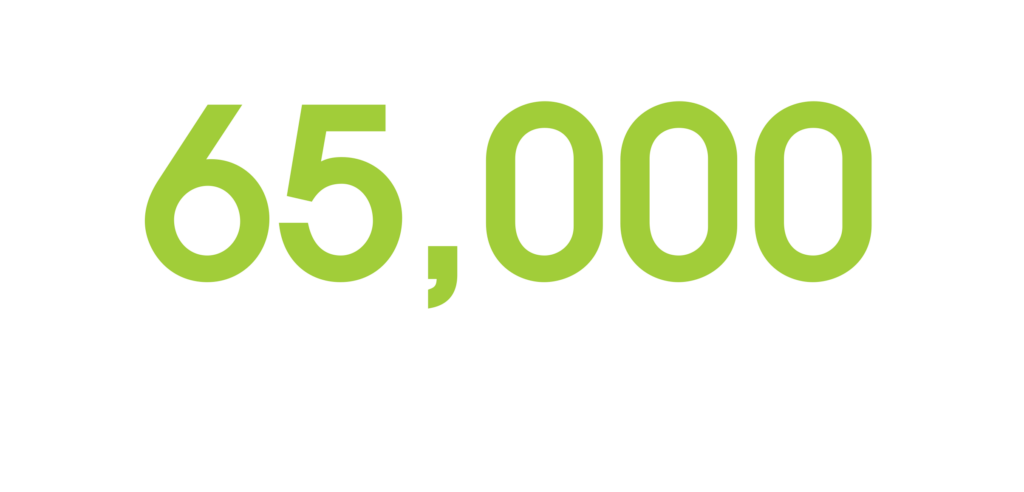
Traditional Surface Infrastructure
The American Society of Civil Engineers’ 2021 Report Card for America’s Infrastructure paints a shocking picture of the status of our surface infrastructure:
- US water main breaks waste an estimated 6 billion gallons of treated water – enough to fill over 9,000 swimming pools – every single day
- 43% of roadways are in “poor” or mediocre condition
- More than 230,000 US bridges require repair and preservation work – 20% of those bridges are considered structurally deficient, meaning they are in “poor” condition. Nearly 21,000 bridges were found to be susceptible to overtopping or having their foundations undermined during extreme storm events.
- The Association of State Dam Safety Officials estimates that there are more than 2,300 deficient high-hazard-potential dams in the US, with deficient dams in nearly every state.
- An overwhelming 91% of Americans agree that parks and recreation is an important service provided by local governments, but despite their popularity, investment in parks is lagging, resulting in deteriorating bridges, trails, parking areas, drinking water systems, and more.
Drug Misuse
In 2021, deaths from drug overdose reached record highs. As drug misuse increases, so does demand for treatment and care, but a recent GAO report noted that nearly one-third of US counties (31%) did not have facilities offering any level of substance use disorder treatment.


Public Safety
Across the country, cities are breaking all-time homicide records. Because shootings tend to be highly concentrated geographically, some communities are addressing the crisis in innovative ways. For example, Oakland, California – a city that saw a nearly 80% increase in homicides between 2020 and 2021 – has invested big in violence prevention, recently developing and offering substantial funding for a Department of Violence Prevention. Austin, Texas announced a similar organization. Baltimore, Maryland is launching its Group Violence Reduction Strategy in partnership with the police department and the state attorney’s office, aiming to address the root causes of violence “by focusing resources on individuals identified as being at the highest acute risk of involvement in gun violence.”
Government Support of Broadband
Now, more than ever, Americans rely on access to high-quality internet service, and government plays an important role in ensuring consumers from coast to coast can get and stay connected. Governments provide support funding to help unserved areas get internet access, provide low-income families subsidies to pay for monthly service, and support programs that improve digital literacy and technology skills and availability.
Where governments want to bring broadband to an expensive, hard to serve area, providing subsidies to an experienced internet service provider is a highly efficient and effective way of ensuring citizens have access to the ongoing benefits of high-quality commercial broadband networks. However, in some unserved areas, subsidies are not sufficient to attract an experienced provider, and the government building its own network may be the best solution. In such cases, these “Government Owned Networks,” or GONs, can play an important role in ensuring the country achieves 100% connectivity.
While GONs can be an important solution in unserved areas, governments need to do their homework. Preparedness and long-term planning are important as noted in research from the University of Pennsylvania Law School’s Center for Technology, Innovation and Competition: “Understanding how likely a project is to remain financially solvent is critical, because any shortfall would require a city either to inject additional taxpayer funds into the project or to default on its loan obligations.”
GONs, however, are not a good solution when they use tax dollars to build duplicative, government-owned broadband networks in areas that already have access. First, those tax dollars should be used to solve real needs. Local governments should focus on improving education, addressing crime and homelessness, upgrading roads and water systems, and the overall needs of their residents, not running technically-complex and duplicative broadband networks themselves. As David Young, former state chair of the NC Democratic Party, and Danny McComas, former Republican NC state representative, summed it up in a recent op-ed: “Private sector companies can serve our broadband needs — they can’t pay our teachers or lower our tax burden — so we should leave Internet service to them, but too many cities aren’t.”
Second, a GON that duplicates an existing broadband network ignores their many consumer drawbacks and taxpayer risks – including a history of failure across the country. Most local governments are not equipped to undertake these highly technical, complex, and costly ventures that history has shown rarely deliver on campaign promises of increased access, faster speeds, or lower prices. In fact, quite often, government-run internet fails altogether and leaves local taxpayers holding the bag. Given most localities have at least one – if not two or more – ISPs already delivering high-quality broadband service, using government funding to build additional, duplicative broadband infrastructure is unlikely to be a wise use of municipal funds – particularly since they typically do nothing to get more people online, wasting limited resources that could instead be dedicated to solving the adoption issue or to more critical, non-broadband government needs.
Heightened Privacy, Security, and Safety Concerns + Worry About Increased Government Control of Personal Data
Americans are increasingly concerned about their online privacy and security – from forgoing free internet service rather than sharing personal information to broader concern about the information the government has and how it is used. Users should be able to explore the internet without concern. In San Francisco, a planned “free” municipal wireless system failed due in large part to concerns about privacy and security and protecting free speech rights: “This no-fee service would have a price—a user’s personal information. Pursuant to Google’s draft contract with San Francisco to be the only no-fee game in town, each time a San Franciscan logged onto the system, Google would know the identity of the individual, what he or she was searching for online, and his or her physical location. Google could obtain a wealth of data about tens of millions of individuals who might not otherwise provide such specific information about their daily activities and interests. All of this information would further increase Google’s ability to develop new targeted products or allow for greater targeted advertising that it could sell at an even higher premium.”
Read More:
- “Companies Positioned in the Middle: Municipal Wireless and Its Impact on Privacy and Free Speech”
University of San Francisco Law Review: Vol. 41: Iss. 4, Article 4. (Link)
Deployment and Connectivity Delays, Ballooning Expenses, and Empty Promises
Even when successful, building a new high-speed internet network is typically a multi-year – and even a decades-long – undertaking, offering no solutions to the connectivity problems they propose to address in the meantime.
According to an audit by the Office of the Utah Legislative Auditor General, when municipal broadband network UTOPIA was formed, the coalition of cities planned to complete the network by 2007. In April 2012 – five and a half years later – the network’s reach and subscription were still less than half of what had been expected – and the number of subscribers was 80% lower than the expectation.
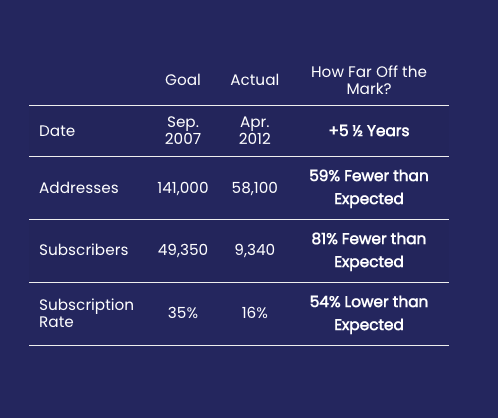
Speaking about local Thames Valley Communications (TVC), a municipally-owned broadband company, City of Groton Mayor Keith Hedrick said it was a startup company that “was unable to gain enough market share to compete with Comcast and needed additional capital in order to expand and become profitable.” TVC lost an average of more than $2 million each year, and operating expenses continued to exceed revenues, with the losses eventually leading to a downgrade in the city’s bond rating. After $34.5 million borrowed for capital investment in TVC throughout the years, TVC was sold for just $550,000, leaving Groton with $27.5M in unpaid debt to be paid.
Fort Collins Connexion, a municipal broadband service in Ft. Collins, CO, “plans to seek out another $19 million to $20 million in construction funding to pull off the last stretch of the network buildout.” The extra funding “would increase Connexion’s budget by about 16%, but Connexion’s director assured city leaders…that it’s likely to be the last budget increase for the project.” The network is “now available in about 66% of the city,” with construction slated to “be finished by summer 2022” and service “available to all premises by the end of 2022.” According to officials, the built-out areas currently have a residential take rate of 31%, dangerously close to the project’s claimed breakeven rate of 28%. The network has also significantly walked back its “overly optimistic…commercial take rate” of 45%, updating the projection to “28% by the end of 2024.”
Cities that deployed GONs on the promise of becoming the next tech hub have routinely been disappointed. Federal government statistics suggest that tech jobs in the “information sector” have decreased in cities like Chattanooga, TN, and Lafayette, LA, since their GONs went live.
Conversely, tech jobs have boomed in cities without a GON – e.g., Austin, Boston, New York City, and San Francisco. Most economic development gains are the product of targeted policies that attract businesses to maintain, expand, or begin doing business locally.
Read More:
- “Fort Collins Connexion Needs $20 Million Funding Boost for Last Phase of Buildout” | Fort Collins Coloradoan, 12/15/2021
- “Burlington’s Quest for Fast Internet Slows Credit Rating” | Bloomberg, 06/16/2013
- “Legislative Audit Blasts UTOPIA’s Planning, Use of Bond Funds” Deseret News | 08/02/2012
- “UTOPIA: Fiber-optic nirvana or a nightmare with no way out? Eleven Utah cities are shackled by debt as the light-speed broadband network continues its decadelong struggle to become a success.” | The Salt Lake Tribune, 12/03/2012
- “Atlantic Broadband to Buy Thames Valley Communications” | The Day, 01/13/2020
- “How A Promising Idea in Groton Went Terribly Wrong” Patch, 01/06/2013
Financial Insolvency that may Result in Higher Taxes or Debts Owed by Residents
Underperforming municipal broadband projects “have caused numerous municipalities to face defaults, bond rating reductions, and direct payments from the public coffers” according to research from the University of Pennsylvania Law School’s Center for Technology, Innovation and Competition assessing the financial performance of municipal broadband.
As just one example, after then-Mayor of Burlington, VT, Bob Kiss misused $17 million in taxpayer funds to keep Burlington Telecom afloat, the city’s credit rating toppled six steps to the precipice of “junk bond” status. It took 10 years for the credit rating to recover. Meanwhile, the municipally-backed internet service siphoned taxpayer funds and prompted a property-tax increase. In a press release, the City of Burlington referred to the fiasco as “the greatest financial crisis in the city’s history.”
“From a credit perspective, it is about what the city could potentially lose. We see this situation occur when a local government becomes involved in a service of some sort that has representation in the private sector and is open to significant competition.”
Geordie Thompson
Now Vice President and Senior Credit Officer, Moody’s Investors Service, Public Finance Group
As quoted by Bloomberg speaking about Burlington, VT
More recently, research from the Institute for Law & Economics at the University of Pennsylvania’s Carey Law School analyzed the financial performance of every municipal fiber project in the US operating in 2010 through 2019.
Actual performance of the resulting 15-project panel dataset revealed that:
Lower Quality Internet Service, Obsolete Technology, Higher Prices + Reduced Private Investment and Competition
US broadband providers make significant investments ($70 billion+ annually) to continually upgrade their networks and technology. When faced with developmental and operational challenges, GONs cannot keep up – leading to lower-quality service, obsolete technology, wasted resources, and hefty financial debts.

- Provo, Utah sold its municipal broadband network to Google for $1 – taking a $40 million loss on the deal. In a hearing on broadband equity, former Provo Mayor and now US Rep. John Curtis (UT-03) put responsibility for the failure of Provo’s municipal network on its “inability to deal with the fast-changing nature of broadband and the large capital needs that happen on a recurring basis.”
- As noted by the Information Technology & Innovation Foundation (ITIF), “Municipal broadband providers do not invest in innovation the same way the private sector does. Local governments are unlikely to contribute to standards-setting organizations or develop and patent new technologies or techniques like private broadband firms do. If we start to treat broadband as a public utility, such as water pipes, sewers, or roads, we are likely to see the same problems develop: deferred investment, congestion, declining quality, and a lack of innovation.”
Having government fund duplicative broadband networks leads to an artificial, taxpayer-subsidized marketplace. The result? ITIF’s examination of the issue found that “mandating additional facilities-based, government-owned competitive “overbuilding” would increase national broadband costs with little benefit.”
Failures of Government-Owned Internet
Most local governments are not equipped to undertake highly technical, complex, and costly ventures. Localities across the county have tried and failed to build GONs – that rarely deliver on campaign promises of increased access, faster speeds, or lower prices – quite often, government-run internet fails altogether and leaves local taxpayers holding the bag.
Click the map to view our database of GON failures.
Cyber Threats Target Local Governments
Cybersecurity threats are increasingly targeting local governments and municipalities that lack the resources necessary to battle these attacks. A few recent examples where cities were unable to defend against ransomware and hackers:
July 27, 2021 – Bristol, VA
Cybercriminals conducted ransomware attack on Bristol Virginia Police Department’s computers and attempted to sell information on the dark web.
May 2021 – Washington, DC
Internal D.C. Metro Police documents leaked by hackers.
May 2021 – Tulsa, OK
City of Tulsa government network and official websites taken out by ransomware.
April 7, 2021 – Oldsmar, FL
Water treatment facility hacked, and increased levels of sodium hydroxide added to the water supply.
January 12, 2021 – Delaware County, PA
Delaware County’s servers hit by hackers and employees’ personal data held for ransom, costing the county $25,000.
November 30, 2020 – Baltimore, MD
Baltimore County Public Schools system shut down by ransomware attack that hit all its network systems.
November 19, 2020 – Virginia Beach, VA
Hampton Roads Sanitation District attacked by ransomware.
June 11, 2020 – Knoxville, TN
City of Knoxville attacked by ransomware.
December 13, 2019 – New Orleans, LA
City of New Orleans and New Orleans Police Department attacked by ransomware.
April 10, 2019 – Greenville, NC
Most city-owned computers shut down after ransomware infection.
April 23, 2018 – Atlanta, GA
City of Atlanta’s municipal operations hit by ransomware attack, costing city more than $2.6 million.
February 21, 2018 – Denver, CO
Colorado Department of Transportation attacked by ransomware.
Learn More:


